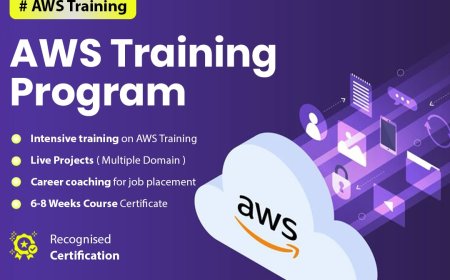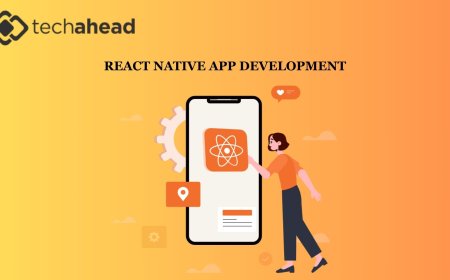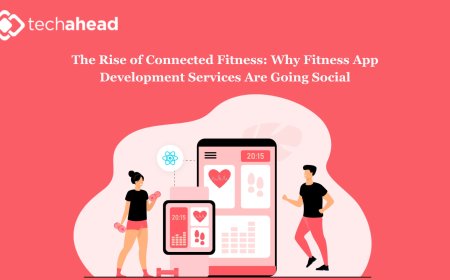Uber Clone App Development: Key Features, Monetization & Market Insights
Get insights into the Uber clone ecosystem, including critical features, revenue models, and market trends to help you succeed in the ride-hailing business.

The ride-hailing industry is growing exponentially, driven by the demand for convenient, fast, and affordable transportation. For startups and businesses wanting to enter this market, developing a full-featured ride-hailing app from scratch can be time-consuming and costly. This is where Uber clone app development comes inproviding a ready-made, customizable solution modeled on Ubers proven business model.
In this article, we will cover the essential features your Uber clone app must have, the various monetization strategies to maximize revenue, and key market insights to help you build a competitive, scalable ride-hailing business in 2025 and beyond.
What Is an Uber Clone App?
An Uber clone app is a ready-made ride-hailing solution designed to replicate the core functionalities of Uber. It is built with modular architecture, allowing startups to customize branding, add or remove features, and quickly launch their own ride-booking platform.
Unlike custom-built apps, clone apps reduce development time and cost significantly by providing pre-tested components. This allows startups to focus on growing their business, acquiring users, and scaling operations efficiently.
Key Features of an Uber Clone App
To succeed in the competitive ride-hailing market, your Uber clone app should include the following essential features for riders, drivers, and admin teams.
Rider App Features
- Easy Registration and Login: Users can sign up via phone number, email, or social media accounts.
- Instant Ride Booking: Book rides immediately or schedule for later.
- Real-Time GPS Tracking: Track driver location and estimated arrival in real time.
- Fare Estimation: Transparent pricing with upfront fare calculations.
- Multiple Payment Options: Supports credit/debit cards, digital wallets, and cash payments.
- Ride History: Access previous trips and invoices.
- Ratings and Reviews: Ability to rate drivers and provide feedback for service quality.
- Push Notifications: Alerts for booking confirmation, driver arrival, ride start, and completion.
Driver App Features
- Driver Registration and Verification: Secure onboarding with document uploads and background checks.
- Trip Alerts and Acceptance: Notifications for incoming ride requests with the option to accept or reject.
- Navigation Assistance: Built-in GPS navigation for optimized routing.
- Earnings Dashboard: Real-time display of daily and monthly earnings.
- Availability Toggle: Switch between online and offline status.
- Driver Ratings: Access rider feedback to improve service.
- Ride History: Track all completed rides and earnings records.
Admin Panel Features
- User and Driver Management: Approve registrations, manage profiles, and suspend accounts if needed.
- Ride Monitoring: Oversee all rides in real time, including cancellations and disputes.
- Fare and Surge Pricing Controls: Set base fares, distance rates, and dynamic pricing for peak hours.
- Payment Management: Handle transactions, commissions, and driver payouts.
- Customer Support Tools: Manage complaints, queries, and feedback.
- Analytics and Reports: Access performance metrics, ride statistics, and revenue reports for data-driven decisions.
Monetization Strategies for Uber Clone Apps
Building an app is only part of the journey; monetizing it effectively ensures sustainable business growth. Here are some popular monetization models for Uber clone apps.
Commission on Rides
A fixed percentage commission (typically 10-25%) is deducted from each ride fare. This is the primary revenue source and scales directly with app usage.
Surge Pricing
Dynamic fare increases during high demand periods encourage more drivers to be available and generate extra revenue.
Read More: How Uber Clone App Development is Transforming On-Demand Mobility
Booking Fees
A small fixed fee charged per booking adds a consistent revenue stream regardless of ride distance.
Subscription Plans
Offer frequent riders subscription packages that provide perks like discounted fares or priority booking for a monthly or yearly fee.
In-App Advertising
Display advertisements within the app for additional income without disturbing user experience significantly.
Featured Listings and Partnerships
Promote specific drivers, rental companies, or partner services for a fee. Partnering with vehicle rental or insurance companies can also generate affiliate commissions.
Market Insights for Ride-Hailing Startups
The ride-hailing sector shows promising growth, but success depends on understanding market trends and customer needs.
Growth Potential
The global ride-hailing market is expected to grow at a CAGR of 11-12% in the coming years. Urbanization, smartphone adoption, and increasing demand for shared mobility drive this trend.
Untapped Emerging Markets
While markets in North America and Europe are mature and competitive, emerging economies in Asia, Africa, and Latin America offer vast opportunities with less competition and high demand for affordable transport.
Super App Trend
Startups are increasingly expanding into multi-service super apps, offering ride-hailing alongside food delivery, parcel services, and more, increasing revenue streams and user retention.
Focus on Sustainability
Introducing eco-friendly options like electric vehicles and carpooling services appeals to environmentally conscious users and differentiates your platform.
Technologies Powering Uber Clone Apps
Microservices Architecture
Breaking the app into independent components allows easy updates and scalability without disrupting the whole system.
Cloud Hosting
Cloud platforms like AWS or Google Cloud ensure high availability, quick scaling, and reduced infrastructure costs.
Real-Time Data Sync
Push notifications, WebSockets, and APIs enable real-time ride tracking and updates, enhancing user experience.
Third-Party API Integrations
Google Maps, payment gateways, SMS services, and analytics tools are seamlessly integrated for full functionality.
Choosing the Right Development Partner
For a secure, scalable, and customizable Uber clone app, select a partner that offers:
- White-label solutions for branding freedom
- Full source code ownership
- Compliance with security standards like GDPR and PCI-DSS
- Post-launch support and maintenance
- Experience in scalable multi-platform apps
Conclusion
Uber clone app development is an excellent way for startups to enter the ride-hailing market with minimal risk and investment. By incorporating essential features, monetization strategies, and leveraging emerging market trends, startups can build profitable, scalable businesses.
Partnering with an experienced clone app development company ensures your platform is secure, reliable, and ready to grow alongside your ambitions.
FAQs
Q1: How long does it take to develop an Uber clone app?
Typically, 2 to 4 weeks with ready-made solutions depending on customization.
Q2: Can I add delivery or rental services later?
Yes, modular apps allow adding new verticals easily.
Q3: Will I own the source code?
Most reliable providers offer full ownership.
Q4: Which platforms are supported?
Android, iOS, and Web platforms are generally supported.
Q5: Is payment processing secure?
Yes, trusted payment gateways with encryption are integrated for secure transactions.
































